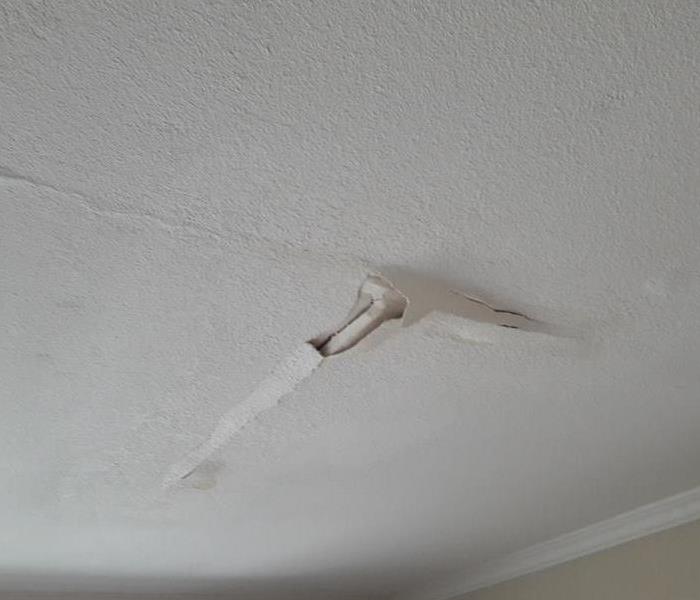Ways to reduce water damage!
3/5/2019 (Permalink)
Whether due to lack of attention or a freak accident, all homeowners at one point or another experience some type of water issue in their homes. And in many cases, the problems present themselves in subtle ways. The key is to be on the lookout for them so that they don't become a matter that requires a significant amount of time, money, and effort to fix.
With this in mind, the Insurance Institute for Business and Home Safety (IBHS) chronicled the five leading causes of water damage based on property insurance claims. In addition, they outlined the potential indicators of a problem and tips on how homeowners can solve them.
1. PLUMBING SUPPLY SYSTEM FAILURE
The average cost of a plumbing supply system failure was more than $5,000 after the insurance deductible was paid, according to the IBHS study.
Ways to Reduce Damage
- Potential indicators of a plumbing problem include an increased monthly water bill, banging pipes, rust stains, and moisture in the walls or on floors, and signs of wet soil erosion near the foundation.
- Setting the thermostat 60 degrees or higher in winter months, letting faucets drip and insulating pipes are all ways to reduce the risk of frozen pipes.
- Consider installing water alarms or a whole-house automatic water shutoff system
2. TOILET FAILURE
Toilet failures in the IBHS study cost more than $5,500 per incident after the deductible was paid. One-third of all toilet failures in the study resulted from an overflowing or clogged toilet.
Ways to Reduce Damage
- After you flush, wait for the valve to completely finish refilling the tank and bowl. If an overflow looks imminent, turn off the supply valve.
- Twice a year, inspect a toilet’s components, such as the fill, supply and flush valves and the supply line.
- Consider upgrading the toilet’s supply line to a sturdier braided steel hose.
3. WATER HEATER FAILURE
The most common causes of water heater failures in the IBHS study were a slow leak or a sudden burst in the tank, followed by supply line failures. The average cost per incident was $4,444.
Ways to Reduce Damage
- Check the life expectancy and warranty for the water heater and replace accordingly.
- Proper maintenance, such as flushing sediments and inspecting the heater’s anode rod, can increase life expectancy.
- Inspect valves to ensure proper operations, and use ball valves in place of gate valves whenever possible.
4. PLUMBING DRAIN SYSTEM FAILURE
The IBHS study found more than half of plumbing system failures were the result of sewer backups. The problem was more common in southern states and on average cost $4,000 per incident after the insurance deductible was paid.
Ways to Reduce Damage
- If the home’s sewer system is connected to the city’s sewer system – a particular problem for older homes – or if you are located downhill or below street level, contact a plumbing professional to install a backflow prevention assembly into the home’s sewer system.
- Plant trees away from lateral drain lines to prevent roots from damaging piping.
- Never pour grease down the drain.
5. WASHING MACHINE FAILURE
More than half of the claims in the IBHS study were linked to washing machine hose failures. Washing machine claims in the study averaged more than $5,300 per incident after the deductible was paid.
Ways to Reduce Damage
- One burst inlet hose, and your laundry room is flooded in a matter of minutes. Replace rubber hoses every three years and consider upgrading to sturdier braided steel hoses.
- When leaving the house for an extended period of time, turn off the hot and cold water supply valve to reduce failure risks.
Nothing can completely prevent water damage incidents. But you can reduce your risk by taking some precautions.





 24/7 Emergency Service
24/7 Emergency Service
